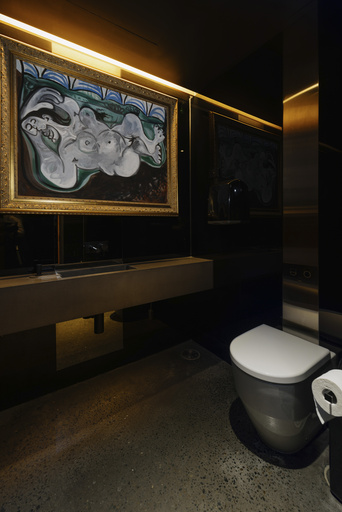In Wellington, New Zealand, an art museum in Australia faced a gender discrimination lawsuit when it exhibited paintings claimed to be by renowned artists like Pablo Picasso in a women-only event. The exhibition sparked controversy and legal challenges, leading to the paintings being hung in a women’s restroom to comply with a ruling allowing men to view them. However, it was later revealed that the artworks were not authentic pieces by Picasso or other famous artists, but creations by the curator of the exhibition, Kirsha Kaechele.
Kaechele disclosed on the blog of Tasmania’s Museum of Old and New Art (MONA) that she had painted the artworks herself after inquiries from a reporter and the Picasso Administration in France regarding their legitimacy. Despite accidentally hanging one of the fake paintings upside down, the artworks had been on display for over three years before their authenticity was questioned or exposed on social media.
The controversy began in 2020 when Kaechele established a women-only space at MONA, named the Ladies Lounge, as a place for women to celebrate their camaraderie and challenge historical exclusion from male-dominated environments. The lounge featured activities like high tea, massages, and champagne served by male butlers and exhibited fake paintings, antiques, and jewelry with misleading descriptions.
To emphasize the exclusion of men, Kaechele claimed the artworks in the Ladies Lounge were vital pieces from the world’s most renowned artists. Following a complaint from a male visitor who was denied entry to the women-only space, the Tasmanian Civil and Administrative Tribunal ruled against MONA, stating that the exhibition was discriminatory and ordered the gallery to permit men’s entry into the Ladies Lounge.
In response to the ruling, instead of admitting men to the exhibit, Kaechele converted the space into a functional women’s restroom to circumvent the directive to allow men in. Despite international news coverage of the incident, the authenticity of the Picasso paintings hung in the restroom was questioned, leading to Kaechele’s confession that she had created the works herself.
The Picasso Administration, responsible for managing Picasso’s estate, did not provide immediate comments on the situation. Kaechele’s revelation about the true origins of the paintings highlighted the elaborate deception involved in the women-only exhibition, shedding light on the controversy and legal challenges that ensued.
